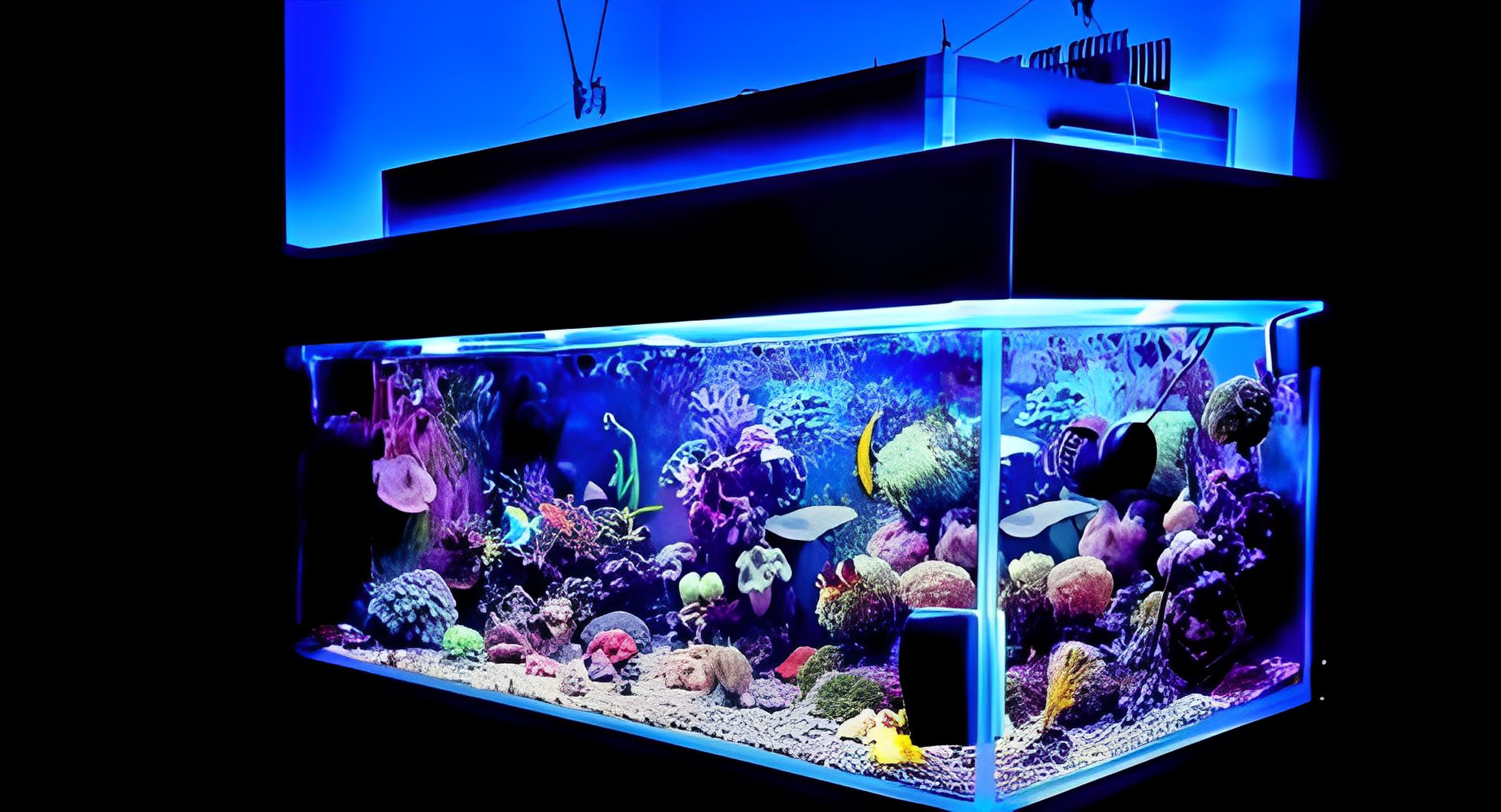Are you ready to dive into the world of saltwater tank maintenance? Whether you’re a seasoned aquarist or just starting out, this complete guide will help you navigate the ins and outs of caring for your saltwater tank. From setting up your tank to maintaining the perfect water chemistry and ensuring the health and happiness of your marine pets, we’ve got you covered.
Importance of regular maintenance
Regular maintenance is crucial for the success of your saltwater tank. It helps create a stable and healthy environment for your marine creatures, prevents the buildup of harmful substances, and reduces the risk of diseases. Without proper maintenance, your tank can quickly become a stressful and unhealthy place for your fish and other inhabitants.
To start, it’s important to establish a routine for water changes and tank cleaning. Regular water changes help remove excess nutrients, waste, and toxins that can accumulate over time. Aim for a 10-20% water change every two weeks, depending on the size of your tank and the needs of your marine life. Additionally, make sure to clean the tank walls, decorations, and equipment regularly to prevent the buildup of algae and other contaminants.
Basic equipment needed for saltwater tank maintenance
Before you can begin maintaining your saltwater tank, you’ll need to gather the necessary equipment. Here’s a list of the basic essentials:
- Tank: Choose a tank size that suits your space and budget. Keep in mind that larger tanks tend to be more stable and require less frequent maintenance.
- Filtration system: A high-quality filtration system is essential for maintaining water quality. Consider a combination of mechanical, chemical, and biological filtration methods to ensure optimal water conditions.
- Heater and thermometer: Saltwater fish require specific temperature ranges to thrive. A reliable heater and thermometer will help you maintain the ideal temperature in your tank.
- Lighting: Proper lighting is crucial for the health and growth of corals and other photosynthetic organisms in your tank. Invest in a lighting system that provides the appropriate spectrum and intensity for your marine life.
- Protein skimmer: A protein skimmer helps remove organic compounds and other pollutants from the water, promoting better water quality.
- Test kits: Test kits are essential for monitoring water parameters such as ammonia, nitrite, nitrate, pH, and salinity. Regular testing allows you to identify and address any issues before they become major problems.
Remember to research and invest in high-quality equipment that suits your specific needs and budget. The right equipment will make your maintenance tasks easier and more effective.
Water quality testing and management
Maintaining the proper water chemistry is vital for the health and well-being of your saltwater tank inhabitants. Regular testing and monitoring of water parameters will help you keep your tank in optimal condition.
Start by testing the salinity of your water using a refractometer or a hydrometer. The salinity levels should typically range between 1.022 and 1.026 specific gravity, depending on the species in your tank. Next, test for ammonia, nitrite, and nitrate levels using appropriate test kits. Ammonia and nitrite should always be at zero, while nitrate levels should be kept as low as possible.
pH is another important parameter to monitor. The ideal pH range for a saltwater tank is typically between 8.1 and 8.4. If pH levels are too low or too high, it can cause stress and health issues for your marine life. Make any necessary adjustments using pH buffers specifically designed for saltwater aquariums.
Maintaining stable water conditions also involves regular water changes and the use of a high-quality salt mix. Water changes help dilute any accumulated toxins and replenish essential elements. When performing a water change, make sure to match the temperature and salinity levels of the new water to those of your tank to minimize stress to your fish.
Cleaning and maintenance of tank equipment
Regular cleaning and maintenance of your tank equipment are essential for its longevity and optimal performance. Here are some guidelines to follow:
- Filter maintenance: Clean or replace filter media regularly to prevent clogging and maintain effective filtration. Rinse mechanical media in dechlorinated water to remove debris, and replace any worn-out media as needed.
- Protein skimmer maintenance: Empty and clean the collection cup of your protein skimmer regularly to ensure optimal skimming efficiency. Additionally, check and clean the skimmer pump and air intake to prevent clogs.
- Lighting maintenance: Clean the light fixtures and lenses regularly to prevent the buildup of algae and other contaminants. Replace old bulbs as needed to maintain the appropriate light spectrum.
- Heater maintenance: Inspect your heater regularly to ensure it’s functioning properly. Clean the heater and check for any signs of damage or malfunction.
- Tank cleaning: Use a magnetic algae scraper or a soft brush to clean the glass or acrylic walls of your tank. Avoid using any harsh chemicals or abrasive materials that can harm your tank inhabitants.
- Gravel or sand cleaning: If your tank has a substrate, use a siphon to remove any debris or waste that has settled on the bottom. Be careful not to disturb any beneficial bacteria that may be present.
Regular maintenance and cleaning of your tank equipment will help maintain optimal water quality and prevent any potential issues.
Proper feeding and nutrition for saltwater fish
Providing proper nutrition is essential for the health and vitality of your saltwater fish. Different species have different dietary requirements, so it’s important to research the specific needs of your marine life. Here are some general guidelines:
- Variety is key: Offer a varied diet consisting of high-quality flake, pellet, frozen, and live foods. This ensures that your fish receive a balanced and nutritious diet.
- Feed in moderation: Overfeeding can lead to poor water quality and health issues. Feed your fish small amounts multiple times a day, only giving them what they can consume within a few minutes.
- Frozen and live foods: Supplement the diet of your fish with frozen or live foods such as brine shrimp, mysis shrimp, and copepods. These foods are rich in nutrients and help mimic their natural diet.
- Consider herbivorous species: If you have herbivorous fish, provide them with algae-based foods and supplement their diet with nori sheets or seaweed clips.
- Avoid overfeeding corals: If you have a reef tank, be mindful of overfeeding corals. Excess nutrients from uneaten food can lead to algae growth and negatively impact coral health.
- Observe feeding behavior: Pay attention to how your fish eat. If any fish are consistently not eating or showing signs of poor appetite, it could be a sign of health issues that need to be addressed.
Remember to adjust the feeding routine based on the specific needs of your fish and monitor their health regularly.
Algae control and prevention
Algae are a common occurrence in saltwater tanks, but excessive growth can be unsightly and harmful to your tank ecosystem. Here are some tips to control and prevent algae growth:
- Proper lighting: Adjust the lighting duration and intensity to discourage excessive algae growth. Avoid extended periods of direct sunlight on your tank, as this can promote algae bloom.
- Use a timer: Invest in a timer to regulate the lighting schedule. Aim for a consistent lighting cycle of 8-10 hours per day to mimic natural conditions.
- Monitor nutrient levels: High nutrient levels, such as nitrate and phosphate, can fuel algae growth. Regularly test and maintain appropriate nutrient levels through proper filtration, regular water changes, and the use of chemical filtration media if necessary.
- Algae-eating organisms: Introduce algae-eating organisms like hermit crabs, snails, and certain species of fish to help control algae naturally. However, be cautious when adding these organisms, as some can become aggressive or may not be compatible with other tank inhabitants.
- Manual removal: If algae growth becomes excessive, manually remove it using a soft brush or algae scraper. Avoid using any chemicals or treatments that can harm your tank inhabitants.
Remember that some algae growth is natural and can even be beneficial for your tank. The goal is to maintain a balance and prevent excessive growth.
Common diseases and health issues in saltwater fish
Unfortunately, saltwater fish are susceptible to various diseases and health issues. It’s important to be vigilant and proactive in preventing and addressing these issues. Here are some common diseases and health issues to watch out for:
- Ich (White Spot Disease): Ich is a parasitic infection characterized by white spots on the fish’s body and fins. Treatments such as copper-based medications or raising the temperature in the tank can help eliminate the parasites.
- Marine Velvet: Marine velvet is another parasitic infection that causes a yellowish dust-like appearance on the fish’s skin. Quarantine infected fish and treat them with copper-based medications.
- Fin Rot: Fin rot is a bacterial infection that causes the deterioration of the fish’s fins. Maintain good water quality, improve tank hygiene, and treat with appropriate antibiotics to address fin rot.
- Lateral Line Erosion (Hole-in-the-Head Disease): Lateral line erosion is characterized by the formation of small pits or holes along the fish’s lateral line. Improve water quality, provide a varied and nutritious diet, and consider adding supplements like vitamin C to the fish’s diet.
- Stress-related diseases: Stress can weaken the immune system of fish, making them more susceptible to diseases. Minimize stress by providing a suitable environment, avoiding sudden changes in water conditions, and ensuring proper nutrition.
Regular observation of your fish, maintaining good water quality, and taking immediate action at the first sign of illness are crucial for preventing and treating diseases in your saltwater tank.
11 of the Most Common Saltwater Fish Diseases
Troubleshooting common problems in saltwater tanks
Even with proper maintenance, saltwater tanks can encounter various problems. Here are some common issues you may encounter and how to address them:
- Cloudy water: Cloudy water can be caused by excess nutrients, overfeeding, or a bacterial bloom. Perform a water change, reduce feeding, and ensure proper filtration to address cloudy water.
- High nitrate levels: High nitrate levels can be caused by overfeeding, insufficient filtration, or inadequate water changes. Increase water changes, improve filtration, and adjust feeding habits to reduce nitrate levels.
- Algae bloom: An algae bloom can be caused by high nutrient levels, excessive lighting, or poor water circulation. Address the root cause by improving filtration, reducing nutrient levels, and adjusting lighting and circulation.
- Coral bleaching: Coral bleaching occurs when corals expel the symbiotic algae that provide them with nutrients and color. Check and adjust water parameters, lighting intensity, and water flow to prevent or reverse coral bleaching.
- Fish aggression or compatibility issues: Aggressive behavior or compatibility issues among fish can lead to stress and potential harm. Research fish compatibility before adding them to your tank and provide hiding places or territories to minimize aggression.
Remember, prevention is key, and addressing issues promptly can help prevent further complications and ensure the well-being of your saltwater tank inhabitants.
Conclusion and final tips for successful saltwater tank maintenance
Maintaining a saltwater tank requires dedication, knowledge, and attention to detail. By following the tips and guidelines in this guide, you’ll be well-equipped to create a stunning, vibrant saltwater tank that provides a healthy and thriving environment for your marine creatures.
Remember to establish a regular maintenance routine, invest in high-quality equipment, and monitor water parameters to ensure optimal conditions. Provide a varied and nutritious diet for your fish, control algae growth, and be proactive in preventing and treating diseases.
Lastly, stay informed and continue learning about saltwater tank maintenance. The world of marine aquariums is vast, and there’s always something new to discover. With dedication, patience, and a love for the underwater world, your saltwater tank can become a breathtaking centerpiece in your home.
So, let’s dive in and make your saltwater tank maintenance a breeze!

